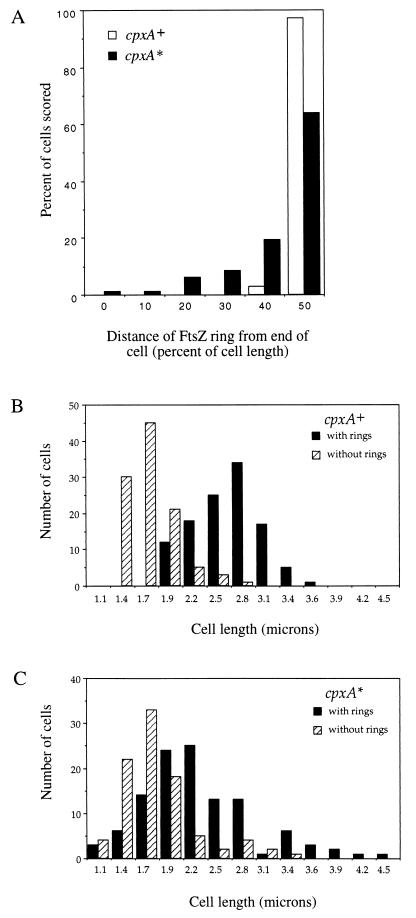FIG. 3.
Position analysis of the FtsZ ring in wild-type and mutant cells. (A) Percentage of cells containing an FtsZ ring (ordinate) versus the distance between the FtsZ ring and the nearest cell end (abscissa). Scoring for the presence of the ring and precise measurements of cell length and FtsZ ring position were carried out on photographic films on which the cell envelope is visible (from the samples shown in Fig. 2). The distance between the FtsZ ring and the nearest cell end was divided by the total cell length and multiplied by 100. Hence, the FtsZ ring in the midpoint of the dividing cell is given a value 50. Open bars, results from 220 cells of JP406 (cpxA+); solid bars, results from 207 cells of JP467 (cpxA2.1*). (B and C) Presence or absence of the FtsZ ring as a function of cell length. The number of cells with (solid bars) or without (hatched bars) the ring is plotted versus cell length. Strains: JP406 (cpxA+), B; JP467 (cpxA2.1*), C.

